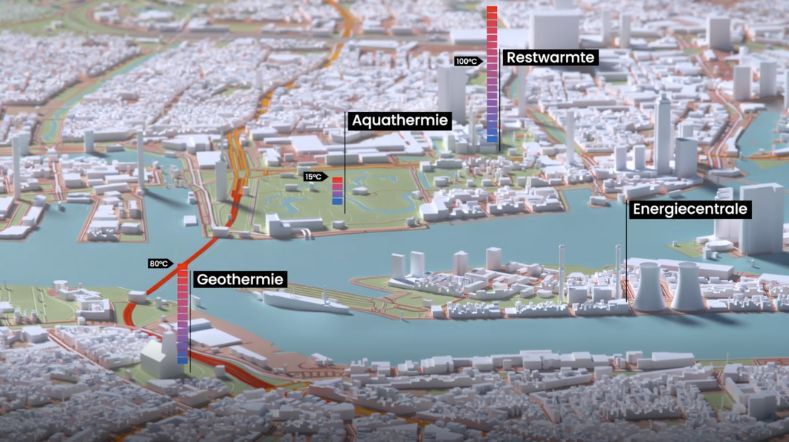High Temperature & Salinity (HTS) Flow Loop
A unique test facility for geothermal & district heating network innovation. Shaping the future of heat together and unlock innovations and new possibilities in geothermal and district heating: TNO’s High Temperature Salinity (HTS) Flow Loop provides a unique testing environment for innovation in geothermal and district heating networks for pushing the limits of energy infrastructure.
What is the HTS Flow Loop?
The HTS Flow Loop is a state-of-the-art testing facility developed by TNO to support research and development in the geothermal and district heating network (DHN) sectors. Designed for flexibility and cost-efficiency, it enables rigorous testing of high-temperature, high-salinity fluid systems under controlled conditions.
With corrosion-resistant construction, precision instrumentation, and adaptable configurations, the HTS Flow Loop offers a robust platform for experimental setups that simulate the toughest operational environments.
Capabilities
The HTS Flow Loop supports a wide range of experimental setups and performance evaluations, including:
- Scaling behaviour analysis on novel pipe wall materials and heat exchangers
- Descaling solution performance testing
- Corrosion behaviour of materials under geothermal conditions
- Exchange filter efficiency studies
- Drag Reduction Agent (DRA) testing, including thermal and flow behaviour
- Component performance testing for DHN systems (e.g., heat exchangers, pumps, valves)
- Mineral recovery investigations from brine
Technical specifications
An overview of the key technical specifications of the HTS Flow Loop:
- Materials: Hastelloy, Titanium, Duplex & Mo-Steel
- Temperature range: 10–90 °C in tanks & up to 115 °C in piping
- Flow rate: –20 to 20 m³/h
- Pressure range: 0 to 10 barg
- Salinity: Up to saturation; supports various compositions (e.g., Na, Ca, Pb & Cl)
- Tank 1: 1 m³, thermally insulated, heat wrapping, stirrer for brine preparation
- Tank 2: 1 m³, compressed air outflow for downstream boundary control
- Pump: Centrifugal, 0–20 m³/h
- Test loop: 1” & 2” insulated piping, heat wrapped, 5 m sections
- Instrumentation: pH, temperature, flow, pressure, differential pressure, level gauge, sampling ports
- Control system: Pre-programmed sequences with built-in safety protocols
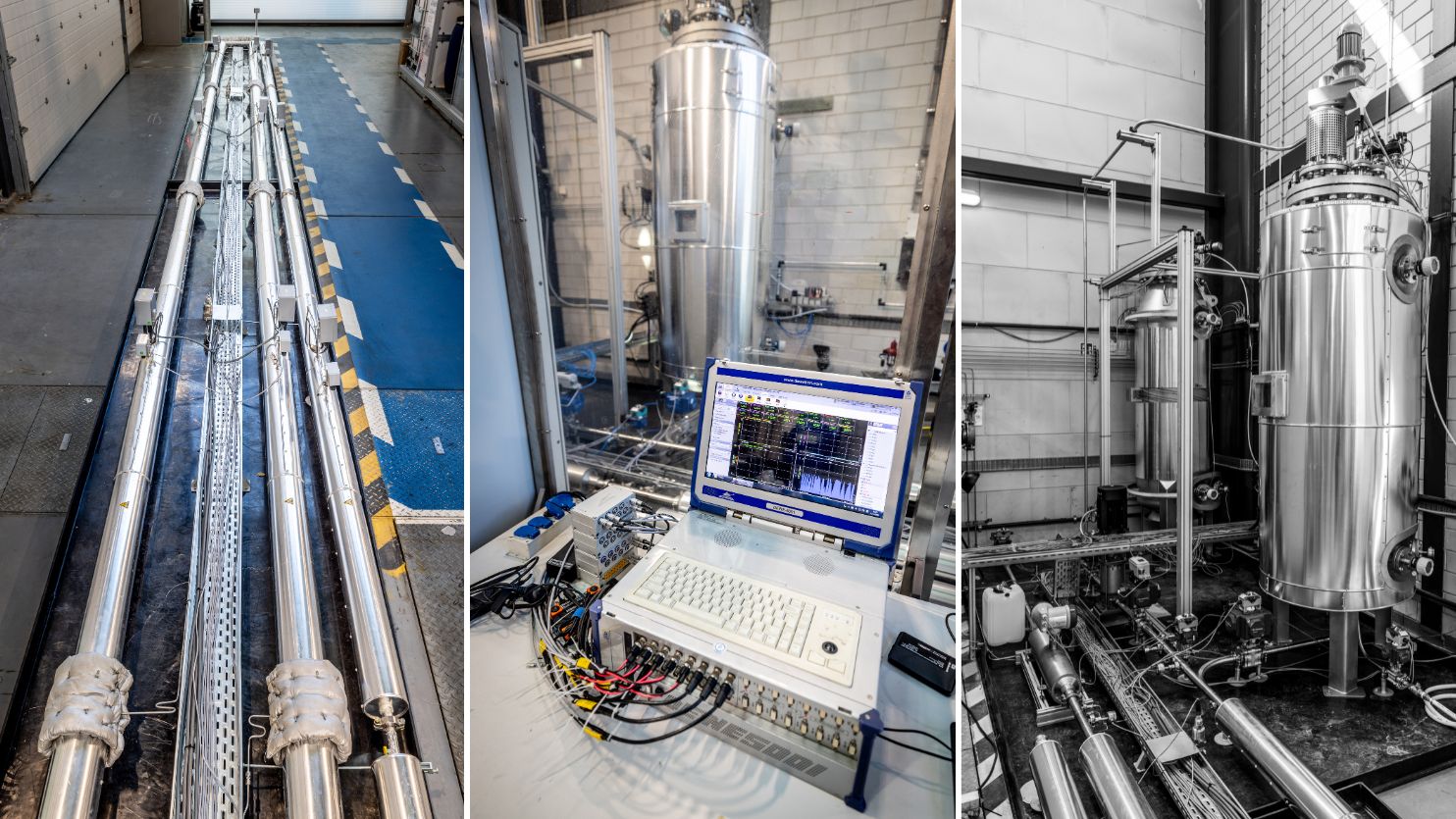
Previous projects and case studies
The HTS Flow Loop has played a central role in pioneering projects aimed at improving the performance, sustainability, and safety of geothermal and DHN systems:
Performance of drag reduction agents with elevated temperature for geothermal & DHN applications; surfactant- and polymer-type DRAs assessed. Read more about DRAGLOW.
Testing cation-exchange filters to selectively remove heavy metal ions and avoid NORM scale in surface equipment.
Assessing the readiness of suppliers to move from metal-based to composite-based geothermal systems.
Collaborate with us
TNO welcomes collaboration with industrial partners, academic institutions, and government agencies. Whether you’re developing new materials, optimising system performance, or shaping future energy policy, the HTS Flow Loop provides the ideal environment to turn ideas into proven solutions.
We are happy to think along with you — discuss your challenges with us and start a geothermal or DHN research project. Together with the HTS Loop, we are ready to meet your needs.
Get inspired
TNO–SodM–NIOZ: ‘Methane emissions in the North Sea often linked to shallow natural gas’


Heat
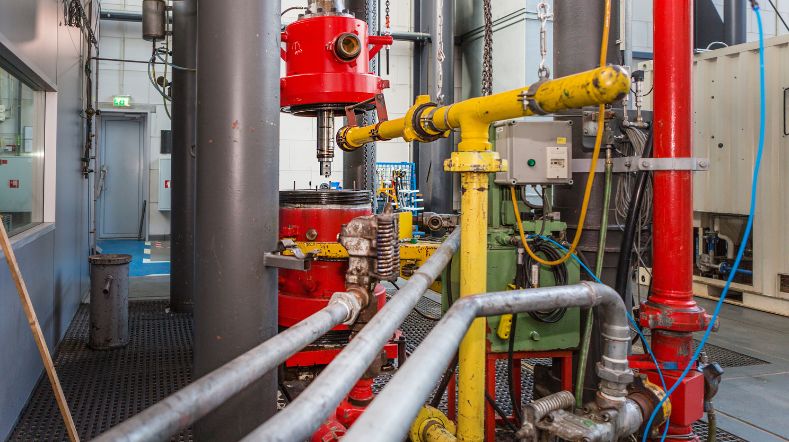

Geothermal energy: sustainable heat from the subsurface
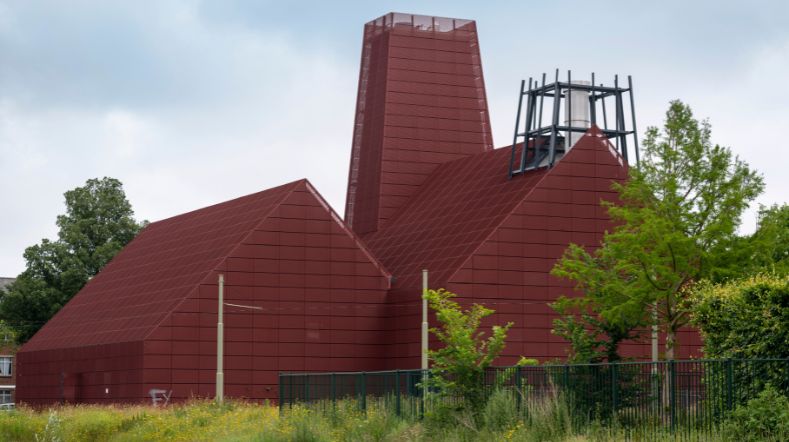

Smarter storage: how TNO optimises thermal energy storage
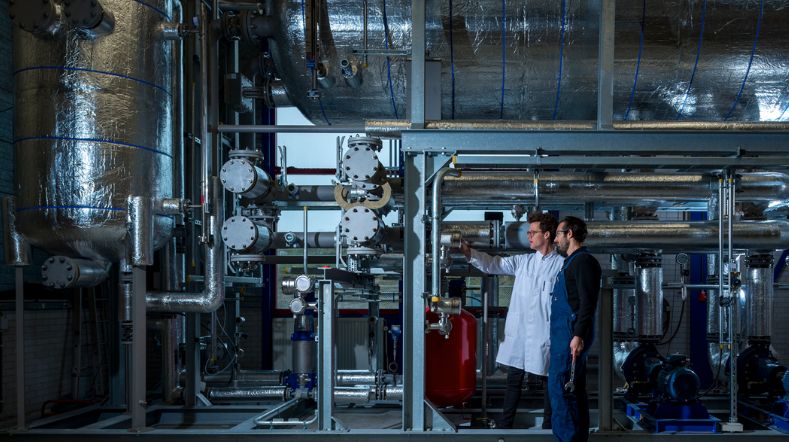

Heat system integration: aligning all the pieces
